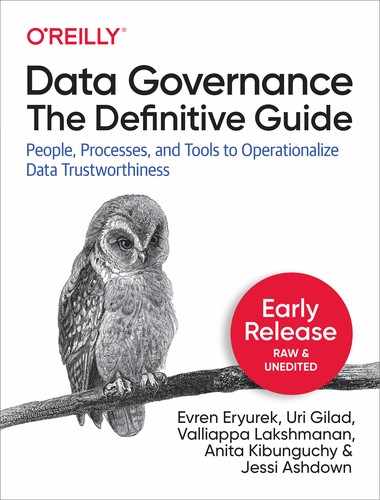Book Description
As your company moves data to the cloud, you need to consider a comprehensive approach to data governance, along with well-defined and agreed-upon policies to ensure you meet compliance. Data governance incorporates the ways that people, processes, and technology work together to support business efficiency.
With this practical guide, chief information, data, and security officers will learn how to effectively implement and scale data governance throughout their organizations. You’ll explore how to create a strategy and tooling to support the democratization of data and governance principles.
Through good data governance, you can inspire customer trust, enable your organization to extract more value from data, and generate more-competitive offerings and improvements in customer experience. This book shows you how.
- Enable auditable legal and regulatory compliance with defined and agreed-upon data policies
- Employ better risk management
- Establish control and maintain visibility into your company’s data assets, providing a competitive advantage
- Drive top-line revenue and cost savings when developing new products and services
- Implement your organization’s people, processes, and tools to operationalize data trustworthiness
Table of Contents
- 1. What Is Data Governance?
- What Data Governance Involves
- Why Data Governance Is Becoming More Important
- Size of Data Is Growing
- The Amount of People Working the Data and/or Viewing the Data Has Grown Exponentially
- Methods of Data Collection Have Advanced
- More kinds of data (including more sensitive data) are now being collected.
- The Use Cases for Data Have Expanded
- New Regulations and Laws Around the Treatment of Data
- Ethical Concerns Around the Use of Data
- Examples of Data Governance in Action
- The Business Value of Data Governance
- Why Data Governance Is Easier in the Public Cloud
- 2. Ingredients of Data Governance: Tools
- The Enterprise Dictionary
- Data Classification and Organization
- Data Cataloging and Metadata Management
- Data Assessment and Profiling
- Data Quality
- Lineage Tracking
- Key Management and Encryption
- Data Retention and Data Deletion
- Workflow Management for Data Acquisition
- IAM—Identity and Access Management
- User Authorization and Access Management
- Summary
- 3. Ingredients of Data Governance: People and Processes
- 4. Data Governance Over a Data Life Cycle
